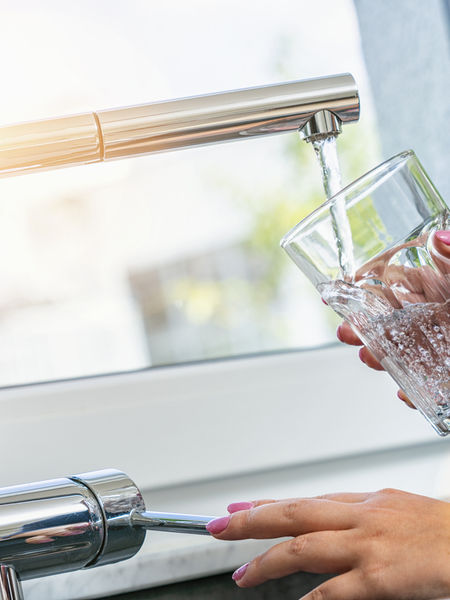Tea-Mastering Electrolytes


When I first got into tea, I thought tap water was fine. Easiest thing ever. Run on over to the sink, fill the kettle-that-my-grandma-thought-was-too-complicated-even-though-it-worked press the button, and the magic of that complicated kettle would make a perfect cup because of its enchanting temperature-changing capabilities.
Then I learned about water.
This is what happens when you accumulate pods of friends who are intelligent, experienced, and have been doing gongfu cha much longer than your Millennial tuchus.
They explained that oh no, your water matters. Different waters have different pH levels, which determines their level of acidity or baseness. (Assuming that “baseness” is the correct term here, since “basic” has taken on a whole other meaning since I was in high school Chemistry.) Why do we care about the pH levels? Because that ultimately affects the flavor of the tea. You want to drink high-quality tea and be able to taste all the intricate nuances of it, right? So the water has to respect it as such.
Hoboy.
Flash forward a month or seven to Long Beach, California, and us happy tea-nerds at the World Tea Expo would carry around water bottles of Poland Spring to share our samples with. We weren’t trying to hurt the environment! We only hoped to preserve some flavanoid content in a well-rounded Pu-Erh.
Now, this water-knowledge carries over to practical life. As in, keeping hydrated when it’s billions of humid New York degrees out. If you walk down the water aisle now, it can be confusing to see the features suddenly listed on all these fancy new bottles they’ve come out with over the last ten years. There are simply too many options! Do I want alkaline or spring? Electrolytes? Antioxidants?
“Yes, that’s what you should be drinking with your tea!”
But there is definitely enough research on how to stay hydrated. Enter the electrolyte .
Electrolytes are ionized minerals that our body needs to maintain fluid balance. The main ones are:
Various electrolyte companies may add in others, like phosphorous, sulfate (ie: San Pellegrino , and boron, but I’ve listed the ones above that I find to be the most essential.
Why should you care about this as a tea drinker?
Because tea— true tea, at least, if we’re talking camellia sinesis— is a diuretic. That means it helps water rush out of your cells faster. Totally acceptable for a non-schvitzy season, or maybe a bodybuilding competition, but not what most of us are trying to achieve for regular health and fitness.
So how do we put those electrolytes into our tea?
The easy way is to get a premade electrolyte supplement, add it in the prescribed amount, and be done it with. But sometimes the less easy way is a lot more fun. And tasty.
The following are fantastic sources of natural electrolytes:
Hibiscus: Adagio offers it on its own, or in many herbal teas. It contains vitamin C, potassium, magnesium, and plenty of antioxidants.
Rosehip: Similar profile to hibiscus, but tangier. Rosehips have many known health benefits .
Himalayan or Celtic Sea Salt: Contains sodium— which you do need, no matter what (hyperlink: https://draxe.com/10-benefits-celtic-sea-salt-himalayan-salt/)— and trace additional minerals.
Citrus Peel: (Orange, Lemon, Lime, etc) Contains a whole punch of vitamin C, plus super refreshing. I’m a fan of Adagio’s Blood Orange for just that reason.
Unpasteurized Coconut, Pomegranate, or Apple Cider Vinegar: Who’d have thought, right Most folks know about the benefits of apple cider vinegar , but I included pomegranate and coconut in there because they’re similarly tasty and healthful options. Can’t have all your drinks tasting like apples, that can get boring.
Honey and Molasses: Turns out that a little sweetness can be beneficial for the body as well as the soul.
Just imagine combining one or more of these with your favorite tea! Celtic Sea Salt with a supercharged iced Gunpowder ? Yas, ma’am.
Try out whatever combination speaks to you, and report back in the comments on your favorite findings! Good luck, and remember to stay hydrated during your experiments.
